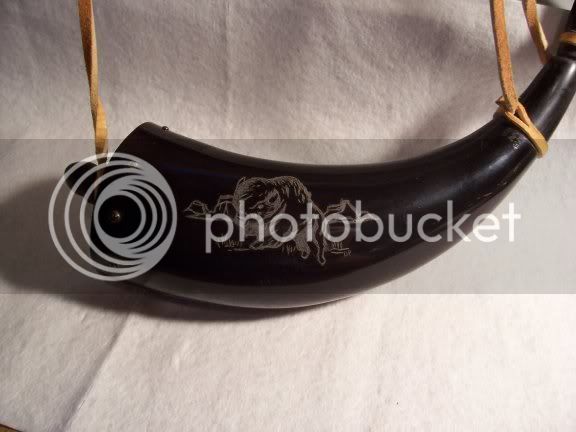Against a black background, you can use white, red, gold, etc. colored paints in the lines/lettering, and let the paint dry.The when you polish the horn, you will remove any of that paint that is outside of the lines,( scratches to some) but leave the paint inside them. That will make the lines pop out against the black background.
You might also consider spraying the black area with lacquer, or varnish, to FIX the black dye to that part of the horn before scrimshawing the lines.
If you have already done the lines, go ahead and spray the black areas. Then, when its dry, simply use your scratch awl or tool to go over the lines again. That will make them stand out. If you then want them to stand out further, you can then use paints to do that. You can use any one, or any combination of paints to highlight the scrimshaw.
Traditional horns did not have paint, but they also didn't have dyed necks, like we see today. So, if you are going to dye one part of the horn, you may as well decide how you want the rest of the horn to look.
I recommend that you buy the Scott and Cathy Sibley's Book, "Recreating the 18th Century Powder Horn"( from Track of the Wolf), if you don't already have it. They have detailed pictures of original and modern replica horns.
Normally, you don't see scrimshaw on the darker portion of the horns. That is reserved for work on horns of Buffalo, or antelope, or some of the exotic species from Africa, which are black in color. On American horns, made from cattle, the lines are highlighted with either black ( india) ink, or with black soot( originals) rubbed into the line. The lines are cut into white or yellowed backgrounds.







